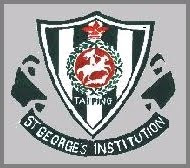Program words of wisdom:-
If Project/Program content is allowed to change freely the rate of change will exceed the rate of progress.
Manufacturing Agreements (MA) are legally binding agreements between two or more parties. MA are pervasive and used in many aspects of life such as they form the cornerstone of commerce in the modern economy. Outsourcing terms are enforceable by the legal system and courts of any modern state. Effective outsourcing management before the MA is an important function in many businesses.
Outsourcing Process
There are four stages in the outsourcing process:
1) Requisition process: Internally at this stage, specifications of the work are determined, and qualified manufacturers are identified.
2) Solicitation process: This entails asking for bids or proposals. Various EMS or service providers will be asked to participate in this process. When purchasing commodities, price might be the deciding factor, but when buying a specific service or product various factors such as competence, quality and warranties are taken into account in accepting a bid or proposal.
3) Award process: At this stage, a manufacturer is selected and a MA contract is negotiated and signed.
4) Manufacturing process: Finally the manufacturing is actually carried out. The manufacturer and purchaser follow the terms of the MA, organize the work and monitor progress.
Some common types of MA are as follows:
1) Fixed price or lump sum: In this type of contract there is an agreed price for the performance of work. It provides a degree of certainty for both parties because the MA clearly defines what is involved and at what price.
2) Unit rate: Here the pay is directly proportional to the volume and range of work. An example is supply of electronics products where the monetary amount would be defined by the volume of units supplied.
3) Reimbursable or cost plus: There is an upfront payment to the manufacturer. These types of agreement are used when the scope of the work is a one off activity like Non Recurring Expenses for tooling, jigs and fixtures.
4) Project/program management: Here the manufacturer agrees to manage a turnkey project for a specific duration of time, from ground zero blank sheet of paper to actual realisation of the final box build product.
Structure
Generally a MA should contain the following headings:
1) Definition of MA terms: This section defined terms and field-specific word.
2) Project scope: This section provides information on the whole project to give context to the services that the MA is going to provide.
3) The services and work to be performed.
4) Facilities that should be provided by the client (e.g. testers, tooling....).
5) Warranties and guarantees of the services provided.
6) Definition of fee base i.e. cost of the project.
7) Terms of payment: Time of payments and conditions that should be met for the payment are clarified.
8) Taxes (e.g. sales and use tax).
9) Insurance coverage and freight terms
10) Other contractual provisions based on the nature of the program.
11) Miscellaneous provisions like "excess material liability should the program ends"
Kacak5 Management
Wednesday, 23 September 2009
Subscribe to:
Post Comments (Atom)


No comments:
Post a Comment